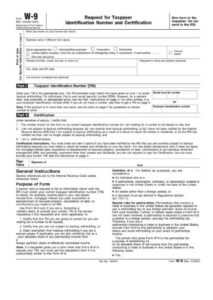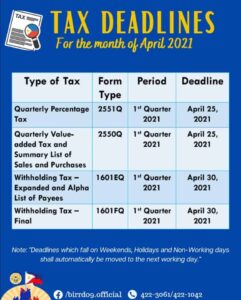
If not, the trial balance contains errors which need to be located and rectified with correcting entries. It’s important to note that some errors may exist despite the debits equaling credits, such as errors caused by double posting or due to the omission of entries.

How frequently should you update your books?
Small business bookkeeping and small company accounting are often confused with one another or taken to mean the same thing. Bookkeeping is the process of recording and reporting company finances and acts as a small but crucial part of basic business accounting. Accounting software can help a business manage finances more efficiently, prepare for tax filing, and provide a clearer sense of the company’s financial health and needs. You can choose from many accounting software systems with varying features and prices.
- Years ago, small business owners often found themselves completely lost when it came to understanding and navigating accounting software.
- If vendors offer discounts for early payment, you may want to take advantage.
- The importance of accounting for small businesses can’t be underestimated.
- After setting up your chart of accounts, you will need to decide what type of accounting method you will use.
- The method that’s right for you will depend on your business’s structure, accounting needs, and size.
How much does an accountant cost for a small business?
Get ready for lots of exciting milestones as you join a special group of people who have accomplished becoming independent. Accounts receivable is the money that other entities owe to your business. For help determining whether your worker is an independent contractor or an employee, see our 1099 vs. W2 article. If you employ independent contractors or freelancers, check out our How to File 1099 guide. It fosters all of Deskera’s accounting automation functionality, and it even comes with a completely 100% free mobile application.
How much should I pay an accountant for my small business?
Get your small business on track and move forward toward the goals and financial objectives you have for your company with business accounting principles. The Introduction to Financial Accounting from UPenn will help you learn how to read the three most common financial statements (income statements, balance sheets, cash flow statements). Or learn the basics of bookkeeping with Intuit’s professional certificate. With its bank reconciliation feature, you can link your bank accounts, PayPal accounts, and other data sources to see real-time business transactions. You can also generate reports such as accounts receivable, balance sheets, profit and loss statements, sales tax reports, and accounts payable.
Understand your tax responsibilities
Minimum deposit requirements can depend on the type of business account and whether you’re opening the account at a traditional bank, credit union, or online bank. When creating an invoice, the software automatically creates the journal entry and maps it to the relevant accounts (accounts receivable, sales, etc.). If you decide to outsource your small business accounting to a contractor or external firm, then you’d still be paying several hundred or thousand dollars a month. The cost of an accountant for a small business will depend on many factors. However, if you decide to hire an in-house US accountant, based on the US Labor Statistics, you’ll be paying around $70,000 a year.
Using spreadsheet software is the cheapest accounting option (especially if you use a completely free software, like Google Sheets). The accounting method you choose has a huge impact on your business, so we highly recommend you talk to your small-business accountant, CPA, or bookkeeper about which method works best for you. With that caveat in mind, here’s a quick overview of the two types—and which type certain businesses are legally required to use.

While other financial statements report data for a period of time (a month, a quarter, or a year), the balance sheet reflects the company’s financials standing at that specific instant. When you start a business, open a separate business bank account that will keep your business finances separate from your personal ones. At the end of the accounting period, the accountant must prepare the adjusting entries to update the accounts that are summarized in the financial statements. Business transactions are recorded in a journal (also known as Books of Original Entry) in a chronological order using the double-entry bookkeeping system. Using accounting software can help you manage your business finances with ease. But investing in expensive software is unnecessary, especially if you’re a brand new freelancer.
Businesses consider receipts from sales of goods, bank account interest, payments made to vendors, and wages paid to employees as operating activities. There are substantial differences in the skills and costs of accountants and bookkeepers. While a bookkeeper is focussed on day-to-day transactions, the accountant concentrates on the strategic financial operations. If you’re planning to outsource your accounting activities, choose someone who is the best match for your business. When you start a new business, you need to set up a chart of accounts to journal transactions in any of the five categories including assets, liabilities, expenses, revenue and equity. This chart of accounts is used to gather statements, analyze progress, and locate transactions.
With the help of accounting software, you can have your business on solid financial footing in no time. While your accounting software will likely handle the majority of the entries needed for your business, there may be occasions when you will need to enter a journal entry. Both A/P and A/R accounts include aging, which is simply a way to manage monies coming in or monies going out. A/P aging displays a list of all bills currently owed vendors and suppliers, tracking due dates and advising you when a payment is due, or when it is late. Accounts receivable is where all of the funds currently owed to your business are recorded until paid by your customers.
“Overlooking bank fees and inaccurate record-keeping” are also frequent pitfalls, Schmied says. To shed light on this topic, we talked to an accountant and a senior financial analyst. By extension, accounting is the process of analysing and examining financial information to create a business strategy, establish forecasts and make decisions. But, this handy guide will help in getting your small business accounting right from the very beginning. Designed for business owners, CO— is a site that connects like minds and delivers actionable insights for next-level growth. Knowing how to track and project your business income and expenses are important skills for business success.
Most reputable accounting software can streamline the accounting process by connecting to your bank account to ensure your financial statements reflect every transaction. While cash basis may be easier to use, most businesses choose the accrual basis accounting for recording transactions. Under this method, you record income when you make a sale and expenses when you incur them.
Managing your cash flow is critical, especially in the first year of your business. Forecasting how much cash you will need in the coming weeks and months will help you reserve enough money to pay bills and your employees and suppliers. Plus, you can make more informed business decisions about how to spend your cash. Both the cash account and the accounts receivable account are assets. Because we’re increasing the bank balance, we enter the $200 as a debit to the Cash account, while we credit the accounts receivable account for $200 because the balance will decrease.
You’d follow this system for all of the account categories that you have. Common categories include asset, liability, equity, revenue, and expense accounts. Proper accounting for small businesses encompasses a number of important tasks. This way, you’ll be able to access your accounting records from any device.
If your company operates in a state that requires sales tax, make sure you comply to avoid serious penalties. The U.S. Small Business Administration (SBA) can help you determine your state tax obligations. You can also use our free sales tax calculator to help calculate sales tax. Your operating cash flow calculator profit and loss statement (also known as P&L or an income statement), both for the current month and year-to-date, tells you how much you earned and how much you spent. Comparing your actual numbers to your planned numbers highlights where you may spend too much or not enough.
Keeping track of your finances is an essential task for business owners. You want a clear picture of how much money you spend to operate your business and how much income you earn. Doing this can allow you to make more informed financial choices and understand your company’s financial health. Many small businesses use a cloud-based inventory management system that provides real-time data when needed.
Moreover, efficient bookkeeping strategies can help you stay out of trouble with the IRS. Your financial statements are more than a look at how your business performed in the past. Bookkeeping is an ongoing task which can be performed daily, weekly, what is cross foot or monthly. Whether you do the task yourself or outsource it to a pro, the goal is to make sure your books are accurate, up-to-date, and useful to you and your CPA. Remember, the best accounting solution is the one you’ll consistently use.

Remember that if you have employees, you’ll also need to account for payroll tax. If you’re unsure about your tax obligations, you may want to talk to a professional accountant or tax expert for advice. If you want to accept online or credit card payments, you can use either Stripe or Paypal. Stripe allows you to directly integrate any application for tracking invoices, expenses, and more.
The Bureau of Labor Statistics estimates in-house accountants make an average annual salary of over $70,000. If you’re outsourcing to a contractor or accounting firm, costs vary from a few hundred dollars per month to thousands per month, depending on your needs. QuickBooks shows all your costs, such as inventory and maintenance costs, and every sale your business makes over a period of time. It also offers inventory automation using perpetual inventory tracking, so your sales and inventory cost are updated every time you make a sale. You can also integrate QuickBooks with Shopify to stay organized and up to date.
This is irrespective of whether you received or paid cash for the product or service. You must use a double-entry accounting system and record two entries for every transaction. the sales tax Small businesses also manage their own accounts receivable to make sure they get paid on time for goods and services that have already been bought or rendered.
While you could handle accounting for your small business on your own, you may consider outsourcing it to an accounting pro. Similarly, whenever you make an expense, the journal entry is automatically created, and it is mapped to the correct ledger account. However, keep in mind that both these payment providers have pretty high fees – around 3% of any transaction received.
 فروشگاه لوازم و آموزش تعمیرات موبایل و کامپیوتر | فروشگاه poweric فروشنده تجهیزات تعمیرات تعمیرات موبایل
فروشگاه لوازم و آموزش تعمیرات موبایل و کامپیوتر | فروشگاه poweric فروشنده تجهیزات تعمیرات تعمیرات موبایل

